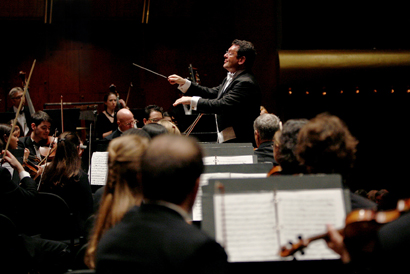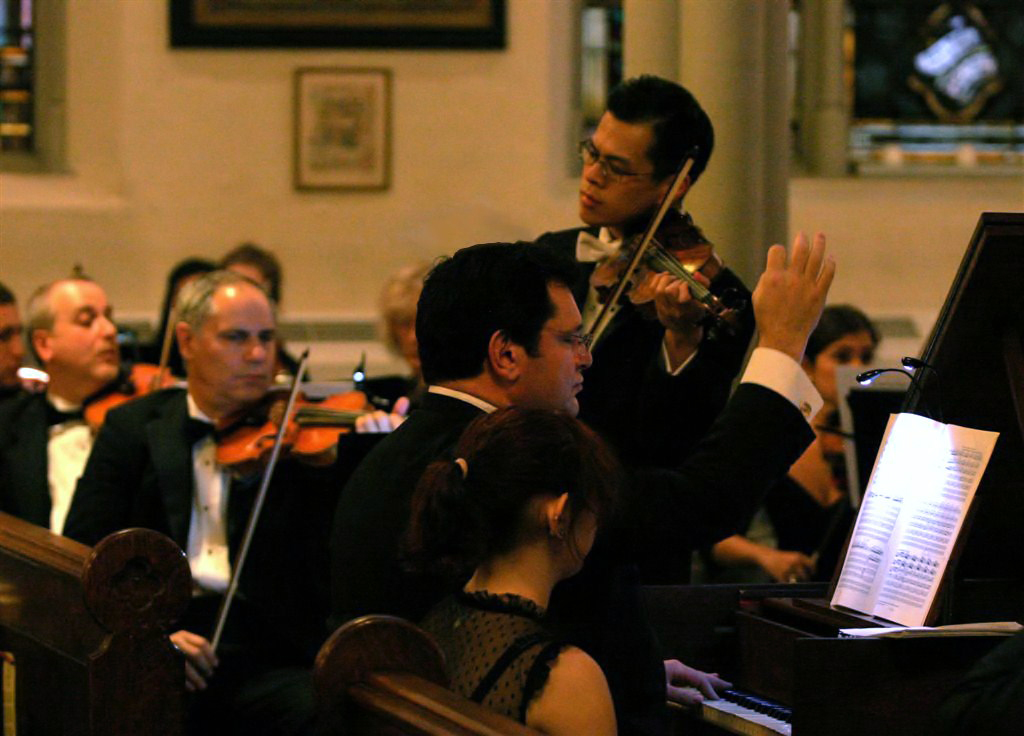In a program entitled “Sublime Journeys,” David Bernard and The Park Avenue Chamber Symphony presented varied, challenging repertory with excellent soloists on display, and they succeeded with flying colors. Strauss’s “Death and Transfiguration,” a meaningful choice for this beautiful space, was a real triumph. This masterpiece demands virtuosity and creates challenges for top-tier ensembles, and the orchestra rose to the occasion with superb playing all around. Bernard, who conducted from memory, brought raw, dramatic intensity to the urgent sections, while conducting the noble transfiguration theme with utmost tenderness and lovely, sustained pacing. Balances were unusually clear, considering the church’s resonant acoustics; Bernard found ways to bring out woodwind details, and the brass shined with solid, blended playing. Concertmaster David Edelson’s solo-playing was rendered with conviction here, the violas were excellent, and the solo oboe playing was scintillatingly beautiful. The only disappointing moments were the bassoon’s and clarinets’ subpar intonation in the introduction and a rhythmically rough transition to the development section; yet, the notoriously treacherous triplet passage in the violins was executed very well indeed.
The program opened with soprano Tamra Paselk singing a consistently evocative, engrossing account of Britten’s “Les Illuminations”, Op. 18. In every single movement, she revealed nuances of character and color with her dramatic acting and gorgeous voice. The orchestra got off to a good start, with very solid, precise violas. The high, exposed writing in the first violins and solo violin part sounded approximate at times, but the balance between soprano and orchestra was perfect, as Paselk could be heard at every turn.
David Chan played with poised brilliance and profound integrity in Beethoven’s Violin Concerto, which concluded the program. And the orchestra was supportive and precise throughout. Although one could call Chan’s performance amazing for its virtuosity, the most memorable aspect of his performance was his heartfelt rendering of the slow movement and all the movements’ lyrical phrases at the top of the register. Chan always put the meaning of the notes first and their accuracy a close second; his priorities are in order, like a great artist’s should be, and we ended up witnessing an interpretation that was both technically polished and sublime.


